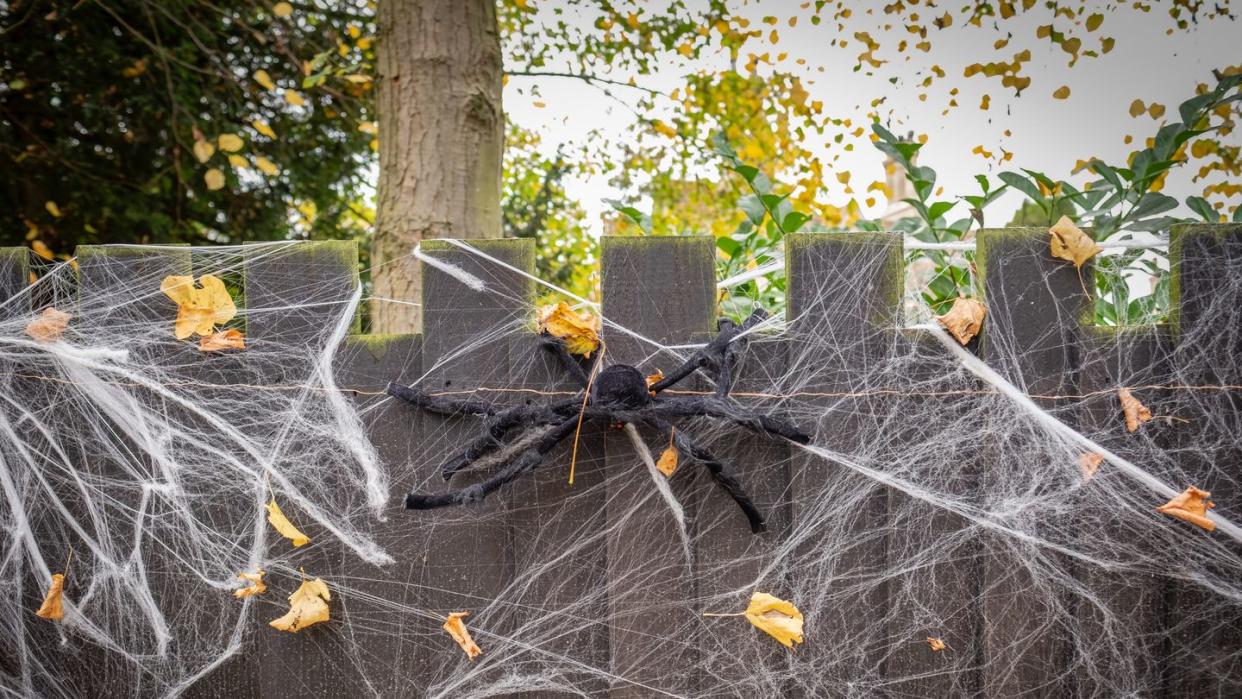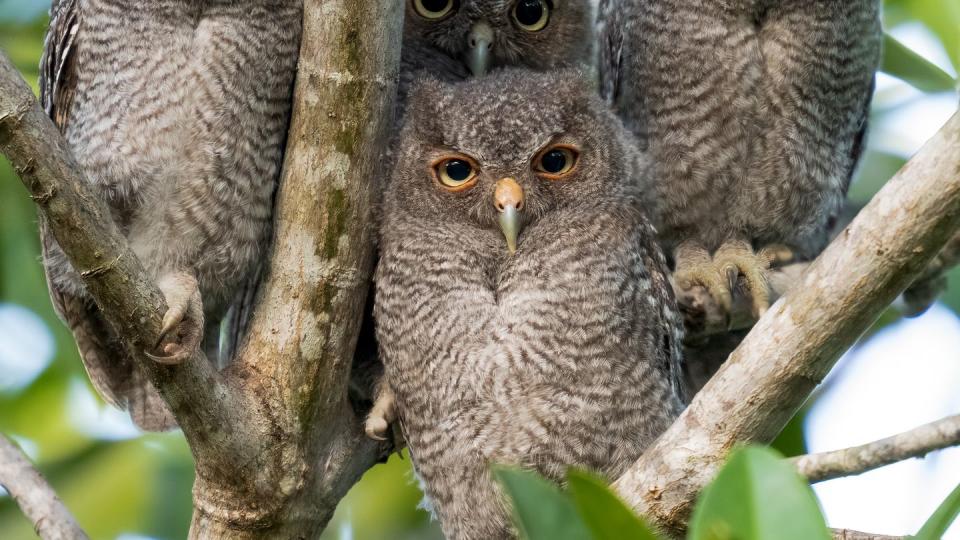The Dark Truth Behind Fake Cobweb Halloween Decor

It's finally October, which means if you have yet to put up your Halloween decorations, now's really the time to do it. While we adore a DIY haunted house and a festive wreath for your front door, and we even applaud the kitschy boldness of those who choose NSFW skeletons for their lawn, there's one go-to outdoor decoration we will not be putting up this year or any after that, and neither should you: Those classic fake cobwebs. You know, the kind that you throw on your shrubbery and stick plastic spiders throughout, maybe weaving in some battery-pack lights to add an eerie element. Not to enter horror movie territory, but it turns out spinning those webs could land you with a few fatalities on your hands.
Every year, birds, other small animals, and insects crucial to our ecosystem become trapped within the familiar cottony confines and are unable to free themselves, causing a potentially horrifying scene. Wildlife rehabilitation centers see these types of cases each time the holiday rolls around, says the Ojai Raptor Center in a Facebook post showing a screech owl wrapped up in the webs. With fall migration season occurring around this time, it's especially easy for songbirds to get caught in the sticky mess.

These spiderwebs are usually made from dense artificial fibers, meaning even if little creatures don't get trapped, any residual material left out is harmful for the environment. More and more birds' nests are being made with litter and other human-made materials, according to a study conducted in July of this year. If your outdoor webs don't capture any animals, they could still cause harm later, due to fibers being left behind.
As if trapping your neighborhood owl wasn't bad enough, the fake webs can also put you and your home at risk. Even if you try to go the more sustainable route and use 100% cotton, these decorations are highly flammable. According to the Federal Emergency Management Agency (FEMA), between the years of 2017 and 2019, an "average of 9,200 fires were reported to fire departments in the United States over a 3-day period around Halloween." These holiday adjacent blazes cause more fatalities on average than other fires during the year, so the idea of adding a hazardous material to the front of your home in a season when fire is even more of a concern than usual is, to say the least, not appealing.
Unfortunately, if you thought you'd be safe to decorate the inside of your house with these artificial webs, we have some bad news. In the same social media post by the Ojai Raptor Center, they make sure to mention the cobwebs are "known to cause intestinal issues in domestic cats if ingested." Save yourself from a massive vet bill and some potential heartbreak by simply leaving these out of your decorating plans. There are so many other ways to have the scariest haunted house in your neighborhood, we'd suggest sticking to those!
You Might Also Like


